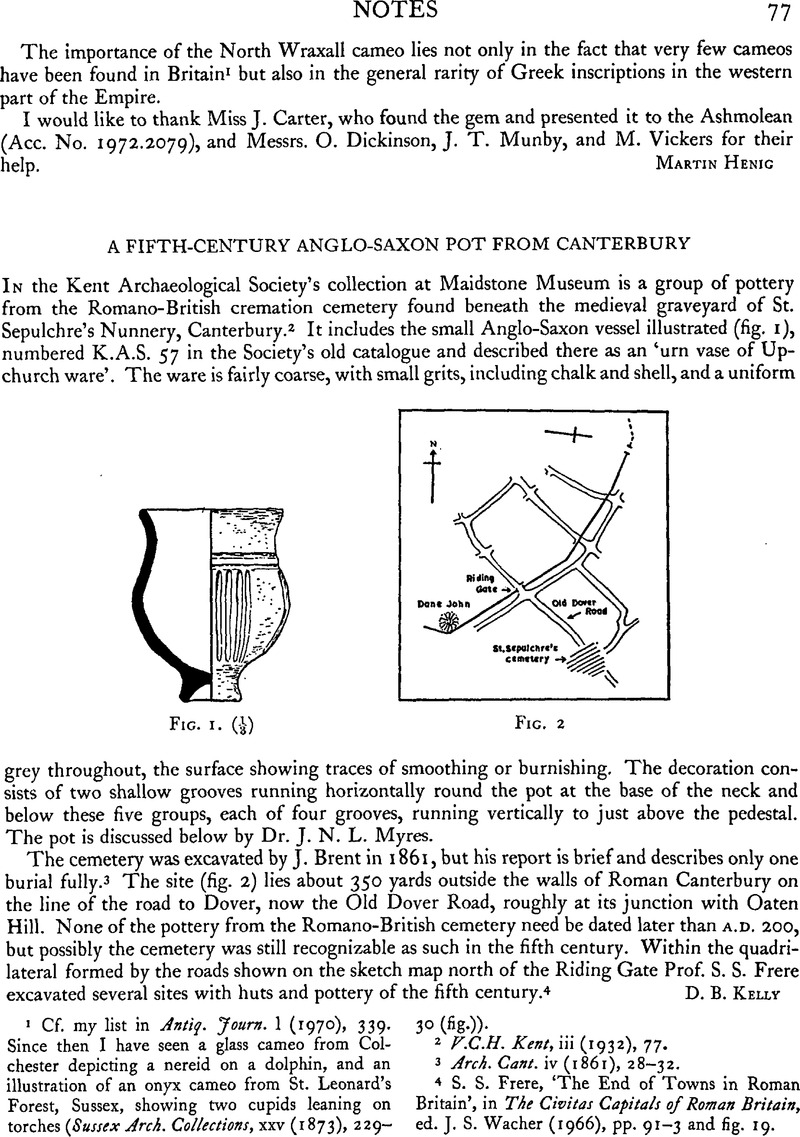Published online by Cambridge University Press: 29 November 2011

page 77 note 2 V.C.H. Kent, iii (1932), 77Google Scholar.
page 77 note 3 Arch. Cant, iv (1861), 28–32Google Scholar.
page 77 note 4 Frere, S. S., ‘The End of Towns in Roman Britain’, in The Civitas Capitals of Roman Britain, ed. Wacher, J. S. (1966), pp. 91–3 and fig. 19Google Scholar.
page 78 note 1 Colchester Museum.
page 78 note 2 British Museum 70, 12–8, 9.
page 78 note 3 Maidstone Museum 121: Antiquity, xviii (1944), 53, 4Google Scholar.
page 78 note 4 Cambridge Museum of Arch, and Eth.: Surrey Arch. Coll. lvi (1959), pl. xix, III, with two bronze disc brooches, pl. xi, 111Google Scholar.
page 78 note 5 Barbican House Museum, Lewes, 29.147.
page 78 note 6 Royal Museum, Canterbury 7659: Antiq. Journ. xvii (1937), pl. XCIV (b)Google Scholar.
page 78 note 7 Proc. Soc. Ant. xxii (1909), 367, fig. 4Google Scholar.
page 78 note 8 Antiq. Journ. xxvi (1946), pl. viGoogle Scholar.
page 78 note 9 Anglo-Saxon Pottery and the Settlement of England (1969), pp. 95–7 and map 7.
page 78 note 10 The Civitas Capitals of Roman Britain, ed. J. S.Wacher (1966), fig. 18.1 is, e.g., exactly like a little biconical vessel with the same decoration from Herredsbjerget near Ribe, Judand: and fig. 19.2 comes from a pot very close in type to one from Fourfeld, near Esbjerg, nearby: Copenhagen Museum C 172061.
page 78 note 11 A. Genrich, Formenkreise und Stammesgruppen in Schleswig-Holstein (1954), Taf. 50.4.
page 78 note 12 K. Zimmer-Linnfeld et al., Westerwanna I, (1960), Taf. 88, 671.